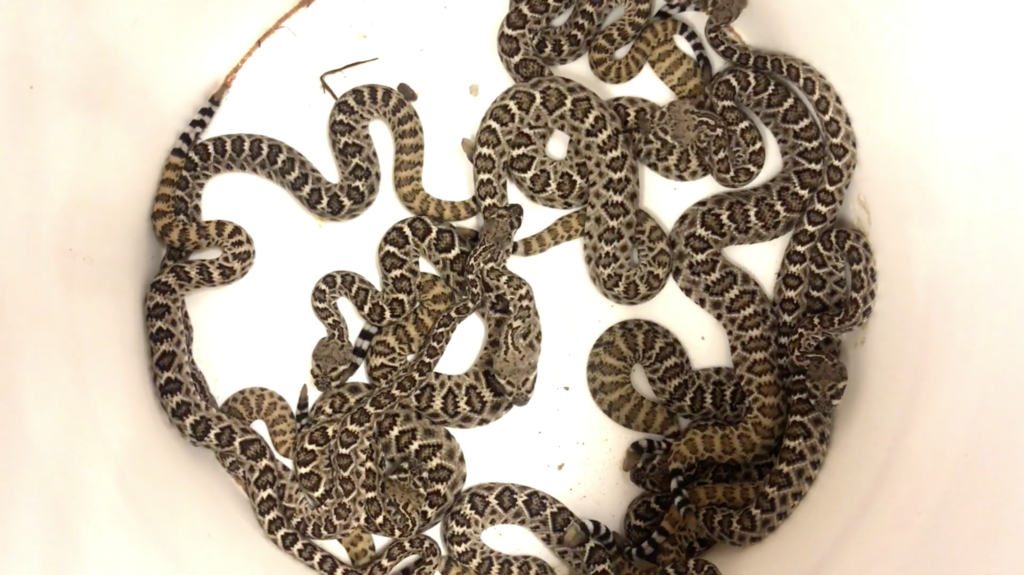
Baby Rattlesnakes: A Comprehensive Guide to Their Biology, Behavior, and Safety
Introduction
Baby rattlesnakes, also known as neonates, are fascinating and potentially dangerous creatures. As the offspring of venomous snakes, they possess unique characteristics and behaviors that distinguish them from adult rattlesnakes. Understanding these differences is crucial for ensuring safety and preventing encounters with these potentially harmful animals. This comprehensive guide will delve into the biology, behavior, and safety considerations surrounding baby rattlesnakes, providing valuable insights for outdoor enthusiasts, homeowners, and anyone interested in the natural world.
Biology of Baby Rattlesnakes
Size and Appearance
Baby rattlesnakes are typically born between 8 and 12 inches in length, with a distinctive diamond-shaped pattern on their backs. Their coloration varies depending on the species, ranging from light gray to dark brown. Unlike adult rattlesnakes, neonates do not have a fully developed rattle at the end of their tails. Instead, they possess a small, button-like structure that will gradually develop into a rattle as they mature.
Venom
Baby rattlesnakes are venomous from birth, possessing a potent neurotoxin that can cause severe pain, swelling, and tissue damage. However, their venom glands are smaller and less developed than those of adult rattlesnakes, resulting in a lower venom yield. As a result, the bites of baby rattlesnakes are generally less severe than those of adults, but they can still be dangerous and require immediate medical attention.
Behavior of Baby Rattlesnakes
Activity Patterns
Baby rattlesnakes are primarily nocturnal, meaning they are most active at night. During the day, they seek shelter under rocks, logs, or in burrows to avoid predators and regulate their body temperature.
Feeding Habits
Neonates primarily feed on small rodents, such as mice and voles. They use their heat-sensing pits to locate prey, striking with lightning-fast speed to inject their venom. After immobilizing their prey, they swallow it whole.
Defensive Mechanisms
When threatened, baby rattlesnakes will typically attempt to flee. However, if cornered or provoked, they may strike defensively. Their small size and lack of a fully developed rattle make them more difficult to detect and avoid than adult rattlesnakes.
Safety Considerations
Habitat
Baby rattlesnakes are found in a variety of habitats, including rocky outcrops, grasslands, and forests. They are particularly common in areas with abundant rodent populations.
Encountering a Baby Rattlesnake
If you encounter a baby rattlesnake, the most important thing to do is remain calm and avoid sudden movements. Slowly back away from the snake, giving it plenty of space to escape. Do not attempt to handle or kill the snake, as this could provoke it to strike.
Bite Treatment
In the unlikely event of a bite from a baby rattlesnake, seek immediate medical attention. While the venom yield is typically lower than that of adult rattlesnakes, it can still cause serious harm. Immobilize the bitten limb and keep the victim calm. Do not cut or suck the wound, as this can spread the venom.
Prevention
To minimize the risk of encountering baby rattlesnakes, take the following precautions:
- Wear long pants and boots when hiking or exploring in areas where rattlesnakes are known to be present.
- Be aware of your surroundings and watch for snakes on trails and in vegetation.
- Avoid disturbing rocks or logs where snakes may be hiding.
- Keep your yard free of debris and rodent populations that attract snakes.
Conclusion
Baby rattlesnakes are fascinating but potentially dangerous creatures. Understanding their biology, behavior, and safety considerations is essential for preventing encounters and ensuring the well-being of both humans and these remarkable animals. By following the guidelines outlined in this guide, you can minimize the risk of encountering baby rattlesnakes and enjoy the outdoors safely. Remember, respecting wildlife and giving snakes their space is the best way to avoid conflicts and promote coexistence.
